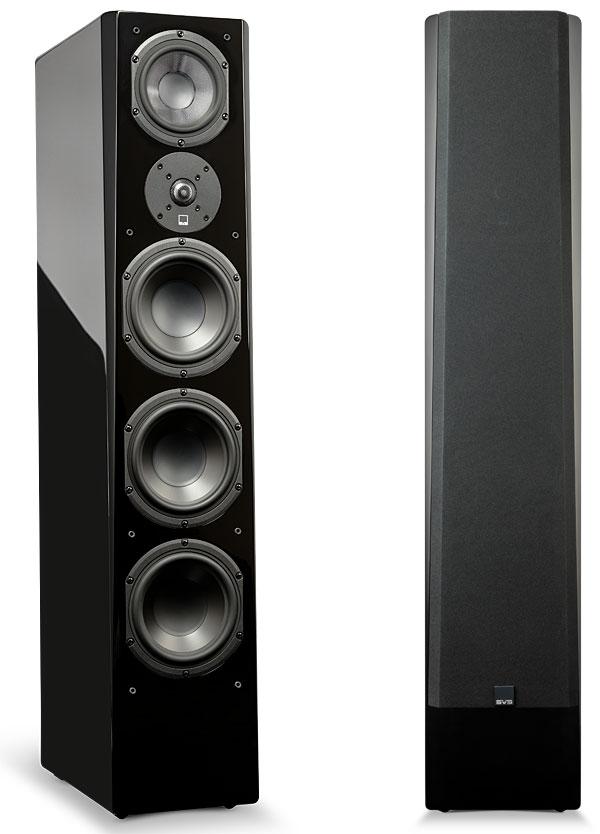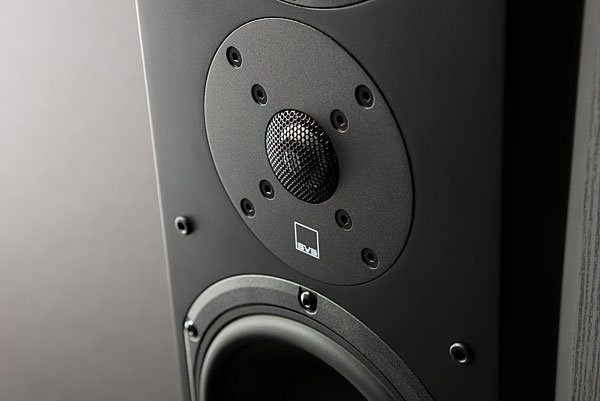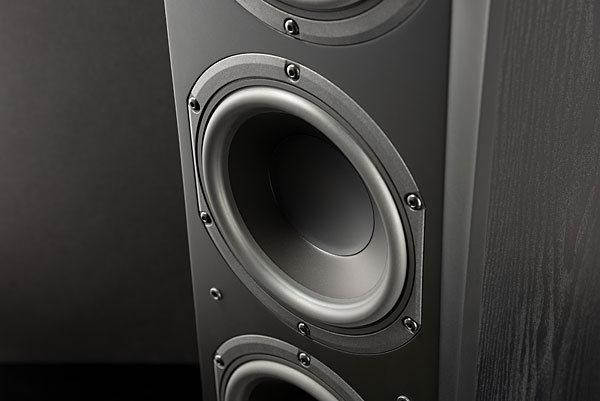SVS Prime Pinnacle Loudspeaker

AT A GLANCE
Plus
Accurate and dynamic sound
Excellent imaging depth of field
Impressive bass extension and weight
Minus
Bass balance may be less amenable to some rooms or placements
THE VERDICT
The latest tower from SVS is a top value/performance contender for full-range loudspeakers.
Certain geographies have long-held associations with loudspeaker design. Maidstone, Kent or Steyning, Sussex in Britain (KEF and Bowers & Wilkins, respectively) for example. Or Cambridge, Massachusetts (Acoustic Research/KLH/ Advent) and Los Angeles, California (JBL) here in the United States.
And Youngstown, Ohio?
Youngstown is the home of SVS, an all-American speaker-maker whose origins lie a few miles up the road in the even-more-small-town midwest. SVS got its start by devising surprisingly effective but highly affordable tubular subwoofers (I've long wondered if the originals were built within "construction tubes" sourced from the local home center), descendants of which the firm still manufactures today, alongside numerous more conventionally rectilinear, highly regarded subs. But SVS has long since branched further up the audio-frequency tree with fuller-range models, including the Prime Pinnacle, a new flagship tower for its Prime series.
 The Prime Pinnacle is a relatively slim, deep tower that follows a fairly familiar pattern of current-day, full-sized loudspeaker design, with a single dome tweeter and cone midrange supported by multiple woofers. Variations of this layout have been adopted by numerous loudspeaker-makers worldwide, almost as if by mutual consent—presumably both because the tall, slim form is attractive to customers, and because its narrow baffle reduces edge diffraction and cabinet resonances (at least in one dimension) while still yielding substantial bass extension potential via multiple smaller woofers.
The Prime Pinnacle is a relatively slim, deep tower that follows a fairly familiar pattern of current-day, full-sized loudspeaker design, with a single dome tweeter and cone midrange supported by multiple woofers. Variations of this layout have been adopted by numerous loudspeaker-makers worldwide, almost as if by mutual consent—presumably both because the tall, slim form is attractive to customers, and because its narrow baffle reduces edge diffraction and cabinet resonances (at least in one dimension) while still yielding substantial bass extension potential via multiple smaller woofers.

In the Prime Pinnacle's case, the tweeter is a 1-inch aluminum-dome transducer and the midrange a 5.25-inch glass-fiber/polypropylene composite cone, arrayed, somewhat unusually, "tweeter under," with the midrange driver positioned above the tweeter. (In any multiway speaker, the physical and electrical relationship between the tweeter and mid/woofer, in interaction with the crossover-circuit, determines the size and shape of the "forward lobe" of radiation, in which mids and highs project in-phase and at the desired balance toward the listener. Presumably the Prime Pinnacle's designers calculated all this to occur roughly at seated ear-height.) The woofers, no fewer than three in number, are 6.5-inch polypropylene cones, and each operates into its own ported sub-enclosure, individually vented to the rear. SVS states that the tower's overall cabinet structure is computer-designed to improve rigidity and reduce internal resonances—always an important consideration in any tall, slim design, which otherwise will want to act a bit like an organ pipe.

The Prime Pinnacle package is visually simple, but quite appealing. Our samples arrived in very nicely executed gloss black lacquer (black-ash woodgrain is also available), with black knit clip-on grilles. Around back (identically finished) are the three ports, one of which resides up top opposite the midrange driver (which itself works with its own, separate, sealed sub-enclosure), and a single pair of speaker input terminals. The lack of dual terminals may disappoint dedicated bi-wirers, but I had no issue with it.
Setup
Setting up the Prime Pinnacle towers was a matter simply of placing them in my long-estab-lished speaker locations about 9 feet from my listening chair and roughly 8 feet apart. The simple but complete SVS manual recommends substantial toe-in, and also reminds the user that proximity to walls and corners will influence bass response, as is true of any loudspeaker with extended response.
After having let the SVS pair play casually for a bit over a week to cover any break-in effects, I commenced serious listening with two-channel, full-range music while simultaneously seeking the optimum distance from the front wall. This is always the most critical speaker-setup variable in my room, and indeed in most others as well.

While moving the SVS towers closer to or further from the wall increased and decreased overall bottom-octaves balance by obvious degrees, it did so with somewhat less tendency to emphasize the "boom" octave centered around 80 Hz or so than I've experienced from some other tower speakers. I posit that the Prime Pinnacle tower's three woofers, each at a different height from the floor, mitigates the floor-bounce (or "Allison effect") of low- frequency first reflection from the floor inducing a peak-dip-peak as it rejoins the direct radiation—first subtractively, out of phase, and then additively, in phase, and so on. More accurately, this must create a series of closely spaced floor-bounce response ripples, but the overall effect seems to be to smooth 50-150 Hz response a good bit, even when fairly close to a wall. This is a welcome additional benefit, and quite possibly another factor in the slim multi-woofer tower trend.






























































